Occupational Safety Training for Selfie Stick Manufacturing
99,000 ₫
Note: The above price is calculated per person and may vary depending on the number of trainees participating in the course and market fluctuations. For more accurate pricing support, please refer to the pricing list or contact our consulting staff directly.
Occupational safety is an important issue in selfie stick manufacturing plants and needs to be addressed promptly to ensure the health and safety of workers and enhance the reputation of businesses. The Occupational Safety Training is one of the effective solutions to raise awareness on how to prevent occupational accidents for workers involved in selfie stick production.
Table of Contents
Toggle1. Overview of Selfie Sticks
a. What is a Selfie Stick?
A selfie stick is a device used for taking selfies or recording videos without needing assistance from others. It usually has the structure of a long stick that can be extended or collapsed, with one end equipped with a holder for a phone or small camera. This device helps users hold the camera at a farther distance than hand-held, allowing wider and more comprehensive shots.
Structure of a Selfie Stick
A selfie stick typically consists of the following main parts:
- Stick body: Usually made from lightweight metals like aluminum or stainless steel, or hard plastic. The stick body can be easily extended and collapsed to adjust the length to suit photo-taking needs.
- Device holder: One end of the stick is equipped with an adjustable holder to fit various smartphones or small cameras. The holder often can rotate and tilt, allowing users to flexibly adjust the shooting angle.
- Remote shutter button: Many modern selfie sticks integrate a remote shutter button, often connecting to the phone via Bluetooth or a cable plugged into the headphone jack. This button allows users to take photos without touching the phone.

b. Types of Machinery for Selfie Stick Production
1. Metal and Plastic Cutting Machines
- Laser cutting machines: Used to precisely cut metal components such as the stick body made from aluminum or stainless steel.
- CNC cutting machines: Computer-controlled cutting machines for producing highly accurate parts from metal and plastic.
- Wire cutting machines: Used to cut small and complex parts from metal or plastic.
2. Bending and Shaping Machines
- Metal bending machines: Used to bend metal tubes into the required shapes for selfie stick bodies.
- Plastic molding machines: Used to shape plastic parts such as phone holders, buttons, and other small components.
3. Milling and Turning Machines
- CNC milling machines: Used to machine precise parts from metal or plastic.
- CNC turning machines: Used to create round or specially shaped parts, such as joints or rotating components of the stick.
4. Plastic Injection Molding Machines
- Plastic injection molding machines: Used to produce plastic parts by injecting molten plastic into molds, creating parts such as phone holders and handles.
5. Welding and Joining Machines
- Ultrasonic welding machines: Used to weld plastic parts together securely without screws or glue.
- Spot welding machines: Used to weld small metal parts, creating durable joints.
6. 3D Printers
- 3D printers: Used during prototyping and testing of new products. 3D printing allows rapid creation of selfie stick prototypes to check functionality and design before mass production.
7. Grinding and Polishing Machines
- Grinding machines: Used to smooth edges and surfaces of metal parts, removing defects and preparing for finishing steps.
- Polishing machines: Used to polish metal or plastic surfaces, producing a finished product with attractive and smooth surfaces.
8. Automated Assembly Machines
- Automated assembly lines: Machines that quickly and accurately assemble the parts of selfie sticks. These systems may include assembly robots, conveyor belts, and automatic quality inspection devices.

c. History and Benefits of Selfie Sticks
History and Development
Selfie sticks are believed to have originated in Japan in the early 2000s but became globally popular around 2014. With the explosion of social media and the selfie trend, selfie sticks quickly became an essential accessory for many people, especially travelers wanting to capture memorable moments without relying on others.
Applications and Benefits
- Group photos: Makes taking group photos easier without needing help from outsiders.
- Hard-to-reach angles: Selfie sticks allow photos from higher or farther angles, creating unique and creative shots.
- Convenient for travel: When traveling alone or in small groups, selfie sticks are useful tools for capturing beautiful moments without others’ assistance.
- Video recording: Besides photos, selfie sticks support video recording with stable and flexible shooting angles.

d. Specific Jobs in the Selfie Stick Manufacturing Factory
Group 1
- CEO, deputy CEO, department heads in the selfie stick manufacturing factory.
Group 2
- Safety officers: managing factory safety, designing safety procedures, supervising and urging staff to comply with safe work processes.
Group 3
- Operating cutting, CNC milling, and turning machines to process metal and plastic parts as per designs.
- Performing welding of small metal parts or joining plastic parts by ultrasonic welding.
- Operating injection molding machines to produce plastic parts like phone holders and handles.
- Assembling selfie stick parts according to standard procedures, including connecting metal parts, plastic parts, and electronic components.
- Operating and maintaining automated assembly lines to ensure continuous and efficient machine operation.
- Packing finished products into boxes or protective packaging, ensuring product preservation during transportation.
Group 4
- Office work, services, sales, marketing.
- Production management, quality management, human resources management, materials management, financial and accounting management.
- Research and development of new products, product design and packaging.
2. Overview of Occupational Safety Training for Selfie Stick Production
In this article, we focus on issues related to Group 3 because Group 3 is the group directly involved in production, facing the highest occupational safety risks. For other groups, please refer here.
a. What is Group 3 Occupational Safety Training?
- Group 3 Occupational Safety Training consists of sessions that equip workers with awareness of how to prevent workplace accidents.
- The safety training course helps workers recognize and avoid hazards, reducing the risk of accidents during work.
REGISTER FOR OCCUPATIONAL SAFETY TRAINING SERVICE
b. Training Duration
Initial safety training duration
- Total training time is at least 24 hours, including examination time.
- 8 hours of theory on safety and hygiene policies and laws
- 8 hours of theory on basic knowledge of occupational safety and hygiene
- 4 hours of theory on specialized training content
- 2 hours of practical training on specialized content
- 2 hours for the final theoretical exam
The safety training center will schedule training sessions based on workers’ availability. Usually, there are 6 sessions over 3 days if the manufacturer arranges continuous training time.
Periodic safety training duration
- Before the occupational safety card expires, workers wishing to renew must attend periodic occupational safety training with a duration of at least 50% of the initial training time.
Explanation: the total periodic occupational safety training time is at least 12 hours, including the exam. After completing the periodic training and passing the test, workers will be reissued or extended the occupational safety card.
c. Training Content
| No. | TRAINING CONTENT | TRAINING DURATION (HOURS) | |||
| Total | Including | ||||
| Theory | Practice | Exam | |||
| I | Policies and legal system on occupational safety and hygiene | 8 | 8 | 0 | 0 |
| 1 | Overview of legal normative documents on occupational safety and hygiene. | 6 | 6 | ||
| 2 | System of standards and technical regulations on occupational safety and hygiene. | 1 | 1 | ||
| 3 | Specific regulations of state management agencies on occupational safety and hygiene when building, expanding, or renovating works and facilities for production, use, storage, inspection of machines, equipment, materials, and substances requiring strict occupational safety and hygiene control. | 1 | 1 | ||
| II | Basic knowledge of occupational safety and hygiene | 8 | 8 | 0 | 0 |
| 1 | Basic knowledge of hazardous and harmful factors at the workplace. | 4 | 4 | ||
| 2 | Methods to improve working conditions. | 1 | 1 | ||
| 3 | Safety culture in production and business. | 1 | 1 | ||
| 4 | Rights and obligations of employers and employees; policies and regimes on occupational safety and hygiene; roles and duties of safety networks and safety officers. | 1 | 1 | ||
| 5 | Safety and hygiene rules, safety signs, using safety devices and personal protective equipment; skills in first aid, accident prevention, and occupational disease prevention. | 1 | 1 | ||
| III | Specialized training content | 6 | 4 | 2 | 0 |
| Comprehensive knowledge of machines, equipment, substances generating hazardous and harmful factors; risk analysis, evaluation, and management of occupational safety and hygiene; safe working procedures with machines, equipment, and substances requiring strict occupational safety control. | 6 | 4 | 2 | ||
| IV | Final safety training exam | 2 | 2 | 0 | 0 |
| Total | 24 | 22 | 2 | ||
See more training content of the 6 groups
d. Occupational Safety Card
After completing the occupational safety training and passing the exam, workers will be issued the occupational safety card (commonly called the occupational safety certificate for Group 3).
The Group 3 safety card clearly shows information such as full name, date of birth, job and specific work environment. It also includes training duration, red stamp, and signature confirming the completion of training.
According to the regulations on card issuance stated in Clause 2 of Article 24 of Decree 44/2016/ND-CP, there are two cases:
- If the employer and employee have a labor contract, then the employer must sign, stamp, and endorse the safety card for the trained Group 3 employee after they have completed training and passed the exam.
- If the worker is freelance or seasonal and does not have a labor contract, then the training unit must sign, stamp, and endorse the safety card after the worker completes training and passes the exam.

3. Identifying Hazards Affecting Workers in Selfie Stick Production
Machine-related Hazards
- Cutting Machines and CNC Machines: These machines have sharp blades and fast-moving parts, which can cause cuts or serious injuries.
- Plastic Injection Molding Machines: High temperatures and high pressure can cause burns and other severe injuries.
Chemical Hazards
- Cleaners and Solvents: Using chemicals for cleaning and processing parts can cause skin, eye, and respiratory problems.
Electrical Hazards
- Electrical Machines and Equipment: Risk of electric shock and fire due to leakage or improperly maintained equipment.
Mechanical Hazards
- Moving Parts: Moving machine parts can cause mechanical injuries such as pinching, crushing, and trapping.
Work Environment Hazards
- Loud Noise: Noise from machinery can cause hearing loss if uncontrolled.
- Dust and Fine Particles: Metal and plastic processing can generate dust and fine particles harmful to the respiratory system.
Ergonomic Hazards
- Repetitive Tasks and Poor Working Posture: Can lead to muscle strain, back pain, and musculoskeletal problems.
Material Handling Hazards
- Heavy Lifting: Can cause back and muscle injuries.
Fire and Explosion Hazards
- Flammable Materials and Electrical Devices: Risk of fire and explosion if not properly controlled.

4. Safety Measures in Selfie Stick Production
- Cutting Machines and CNC Machines: Ensure all machines are equipped with protective devices such as guards and emergency stop buttons. Provide full personal protective equipment (PPE) such as gloves, safety glasses, and protective clothing to employees.
- Plastic Injection Molding Machines: Train employees on safe operating procedures for injection molding machines. Use heat protection devices and ensure the work area is well ventilated.
- Cleaners and Solvents: Provide personal protective equipment such as chemical-resistant gloves, respirators, and protective coats. Ensure good ventilation and emergency eye wash stations in the work area.
- Electrical Machines and Equipment: Ensure all electrical equipment is regularly inspected and maintained. Train employees on electrical safety and emergency response procedures.
- Moving Parts: Use protective devices such as guards and safety locks on machines. Train employees on how to avoid hazardous areas.
- Loud Noise: Use noise reduction devices and provide ear protection for employees working in noisy areas.
- Dust and Fine Particles: Use industrial dust extraction systems and provide masks for employees.
- Regularly conduct work environment monitoring in factories to collect and analyze harmful factors to workers, then adjust to reduce hazards to prevent occupational diseases.
- Repetitive Tasks and Poor Working Posture: Design reasonable work tasks, provide supportive equipment like appropriate chairs, and encourage employees to perform regular stretching exercises.
- Heavy Lifting: Train employees on proper lifting techniques and use lifting aids such as forklifts and conveyors.
- Flammable Materials and Electrical Devices: Comply with fire safety regulations, ensure proper firefighting equipment is available, and train employees on emergency response procedures.
5. Benefits of Occupational Safety Training for Selfie Stick Production
An Toàn Nam Việt provides your business with the following great benefits upon completing occupational safety training courses as regulated in Decree 44/2016/ND-CP on Occupational Safety and Hygiene, for companies, factories, and enterprises.
- Workers can recognize potential accident hazards and take preventive measures to avoid workplace accidents.
- Your business can establish risk prevention measures in production, operation, and maintenance processes.
- Reduce costs related to safety incidents in the workplace.
- Continuous production without interruption helps increase labor productivity and product quality.
- Ensure compliance with occupational safety laws to avoid legal risks.
- Create credibility and professionalism in all aspects, thereby elevating your business brand.
Nam Việt’s training courses are solutions to prevent and counteract external risk factors affecting individuals, helping them avoid dangers that may lead to injury or even death.
REGISTER FOR OCCUPATIONAL SAFETY TRAINING SERVICE
6. Customer Feedback After Completing Occupational Safety Training for Selfie Stick Production
An Toàn Nam Việt has many years of experience accompanying numerous businesses across Vietnam, especially in the southern provinces. This responsibility is very precious to Nam Việt; therefore, its Occupational Safety Training work is increasingly professional. The motivation behind An Toàn Nam Việt’s growth comes from positive feedback and suggestions from our clients. Below are some testimonials from partners we have served.
Bac Nam E&C Investment and Construction Joint Stock Company
“My first time using An Toàn Nam Việt’s service, I was surprised by the enthusiastic 24/7 support from the consulting team. The class organization was quick and convenient for our company. Thanks a lot to Nam Việt!”
Hoa Dat Construction and Trading Joint Stock Company
“Nam Việt’s service helped us greatly in simplifying occupational safety and completing safety documentation for our work process. The consulting team was enthusiastic and timely in addressing our inquiries. 5 stars for Nam Việt.”
See more customer interview sessions after using An Toàn Nam Việt’s services
7. An Toàn Nam Việt’s Occupational Safety Training Capabilities
An Toàn Nam Việt is a reputable and quality occupational safety training center in Vietnam today. Our occupational safety training sessions are continuously held at manufacturing workshops, factories, or construction sites nationwide (63 provinces in Vietnam).
REGISTER FOR OCCUPATIONAL SAFETY TRAINING SERVICE
Occupational Safety Training License
- An Toàn Nam Việt has been inspected and certified by the Department of Safety of the Ministry of Labor, Invalids and Social Affairs for eligibility to conduct occupational safety and hygiene training. This strengthens our ability to provide occupational safety training.

Materials and Lectures
- Before being used in Occupational Safety Training courses, the materials are reviewed and approved to ensure accurate knowledge and effective application.
- The teaching methods of instructors are standardized according to An Toàn Nam Việt‘s standards, developed by experts in occupational safety and hygiene training to maximize learners’ knowledge absorption.
Facilities
- Controlling environmental factors in the classroom improves teaching performance and learner knowledge absorption.
- Our training facility is equipped with spacious classrooms meeting standards for area, lighting, training equipment, etc.
8. Nationwide Reputable and Quality Safety Training Center
At An Toàn Nam Việt, we prioritize professional dedication to occupational safety training. For us, imparting self-protection knowledge to workers to equip them with safety on their livelihood path contributes to nation-building.
To ensure effective training, we carefully prepare every detail, from tools, teaching equipment, to curriculum, materials, audio, and lighting.
Our occupational safety instructors are experts with many years of experience. Some even have research projects identifying hazards across industries and prevention methods.
Instructors’ lectures are practical and delivered vividly and clearly to workers. This helps learners stay comfortable during learning and absorb knowledge effectively. Of course, content strictly follows Decree 44/2016/ND-CP.
Thus, learners understand many preventive measures against hazards and how to protect themselves. They also apply these appropriately in real work.
Our training center is proud to offer reputable and professional occupational safety training with advantages such as:
- Competitive training costs while ensuring quality.
- Flexible training schedules adapted to company production situations.
- Fast and legal certification paperwork processing.
- Experienced instructors with many years in the field.
- Classrooms controlled to improve teaching effectiveness and learner knowledge absorption.
- Lectures tailored to occupational safety in enterprises.
- An Toàn Nam Việt works dedicatedly and professionally to support customers accurately and quickly.

9. Additional References for Occupational Safety Training Materials for Selfie Stick Production
- Occupational Safety Materials for Selfie Stick Production
- Occupational Safety Training Material Set
- Occupational Safety Training Test Set
- Occupational Safety Lecture for Selfie Stick Production
- Occupational Safety Quiz for Selfie Stick Production
No comments yet

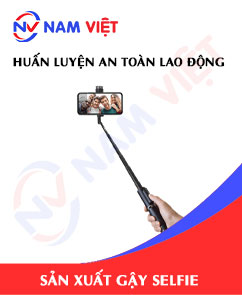
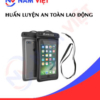
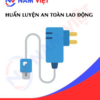



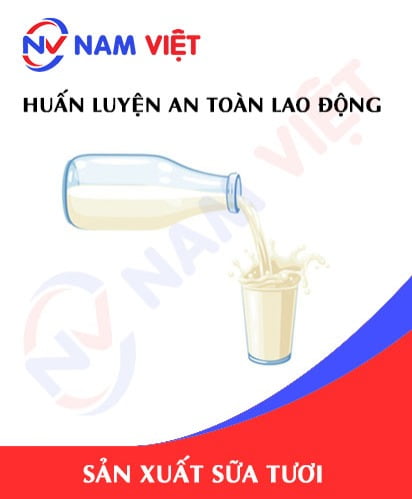

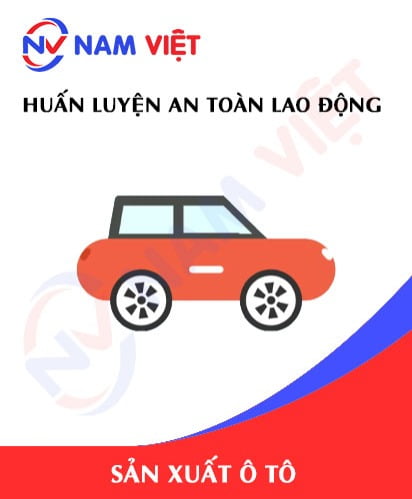
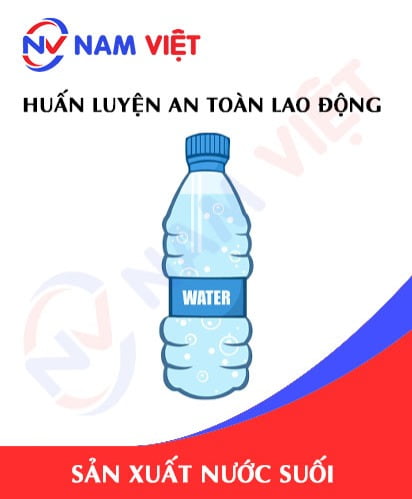
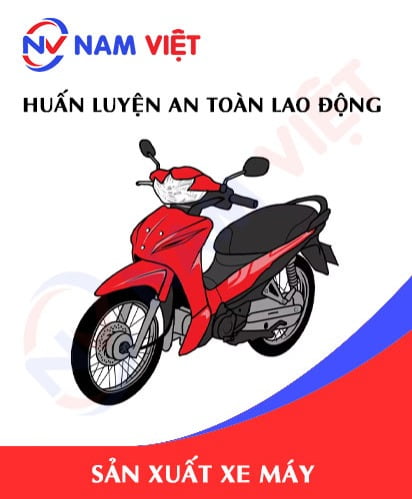
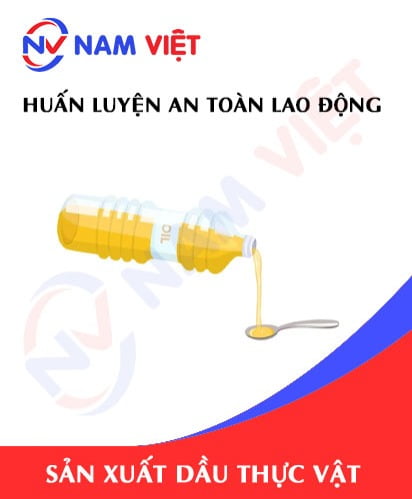

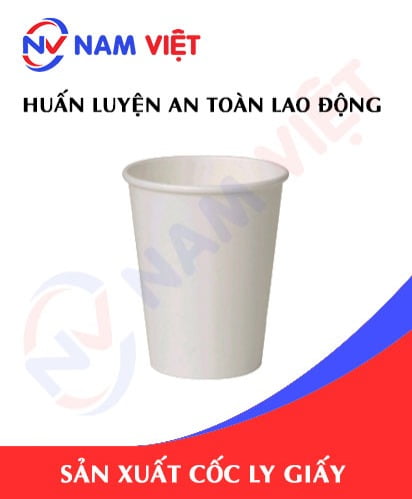
Review Occupational Safety Training for Selfie Stick Manufacturing
There are no reviews yet.